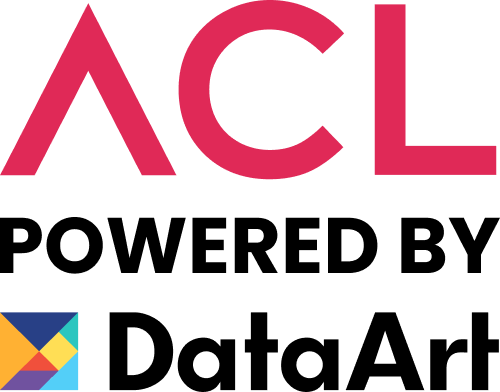Data governance is key to any business trying to scale and amplify its growth more sustainably. If you’re wondering how you can implement a proper data strategy when working with a remote software development team, you’ve come to the right place. Today's article focuses on applying data governance principles to distributed projects and teams. Keep reading to learn more!
What Is Data Governance?
We’ve discussed what data governance is on this blog before, but we’ll go over a quick refresher in case you’re new to the subject, Data governance is the framework that ensures high data quality, data management, and data security within an organization, aiming to enable effective data usage and compliance with relevant regulations. This approach involves the establishment of policies, procedures, and standards to manage the availability, usability, integrity, and security of data used in an organization. This is a critical component of an organization's strategy to harness data's potential while mitigating risks associated with data management and regulatory compliance. It supports better decision-making, enhances operational efficiency, and ensures adherence to evolving data privacy laws.
Why Data Governance Is Relevant for Remote Development Teams
Now that you know what data governance is, it’s important to understand why you should even implement data governance for remote development teams in the first place. Statistically, poor data quality costs organizations an average of $12.9 million annually. This substantial financial impact highlights the need for robust data governance practices to ensure data accuracy, consistency, and reliability. Trends indicate that the adoption of cloud computing and advanced technologies such as AI and machine learning are transforming data governance practices, and creating a greater need for them. By 2025, over 65% of the world’s population will be covered by modern data privacy regulations like the GDPR.
At the end of the day, it’s easy to see why the world needs more data governance. But you’re probably here to figure out how it can help you work better on a remote setting. Here’s the thing: effective data governance ensures that distributed teams can work efficiently and securely and enhances collaboration by providing clear guidelines on data access and usage. This is essential for remote teams who rely on shared data to collaborate effectively.
Moreover, data governance aids tremendously in cybersecurity matters. Implementing a solid data strategy can save you thousands of dollars in counteracting data breaches and hacker attacks. It also ensures your remote development team understands the level of confidentiality required to work with you and follows internal rules accordingly. Remote teams also need to comply with different regulatory requirements, especially when working with international clients or handling cross-border data transfers. Data governance ensures that remote projects adhere to legal and regulatory standards, minimizing the risk of non-compliance penalties and client-related issues.
How To Implement Data Governance in Remote Development Teams
1. Establish Clear Policies.
Start by defining clear data governance policies that are easily accessible to your remote teams. These should outline the rules for data access, data quality standards, security protocols, and compliance obligations. Consistency is key, especially when working with outsourced development teams.
2. Utilize Collaborative Tools.
If you want to start implementing data governance into your team without any significant disruptions, you can try leveraging collaborative tools that support related functions. Platforms like Microsoft Teams or Slack can facilitate communication, while cloud-based data management systems like Google Cloud or AWS ensure that data policies are uniformly applied across all data points and that team members have secure access to necessary data.
3. Regular Training and Awareness.
This might not be a soft launch of your new data strategy, but having your remote development team take data governance training is the quickest way to get them up to speed on the subject. Conduct regular training sessions to keep remote teams aware of the importance of data governance and the specific practices your company follows. This can include training on new regulations, refreshers on data security practices, and updates on internal data policies. Forbes notes that continuous training can increase compliance by up to 70%, so it’s important to hold a few seminars during the year as well.
4. Implement Advanced Access Controls.
For remote teams, particularly those who access sensitive data from various locations, robust access controls are non-negotiable. Implement multi-factor authentication, secure VPNs, and encrypted connections to ensure that data is accessed securely. Studies indicate that implementing advanced access processes like multiple-factor authentication can prevent 99.9% of account compromise attacks.
5. Monitor and Audit Compliance.
IBM’s data shows that organizations that deploy automated security detection systems experience a 52% lower cost of data breaches. This is why it’s absolutely crucial to start monitoring tools to continuously audit data usage and ensure compliance with data governance policies. Automated tools can alert you to unusual data patterns or access violations, allowing you to address issues before they escalate.
6. Foster a Culture of Data Stewardship.
To ensure a smoother implementation of this new system, encourage a culture where every team member understands their role in the company’s data governance strategy. This includes promoting data cleanliness, precision in data entry, and cautious data handling. When team members take personal responsibility for the data they handle, governance improves. A survey by the Data Management Association reveals that organizations with a strong data governance culture benefit from a 40% improvement in operational efficiency - so it’s clear why yo should at least try to integrate it into your remote development team’s everyday work.
7. Regular Feedback Loops.
The best way to ensure everyone feels included when it comes to data governance is to implement a system where remote team members can provide feedback on data governance policies and tools. This not only helps in identifying practical challenges in the remote work setup but also engages team members by making them part of the solution.
8. Ensure Regular Updates and Maintenance.
Both your data governance strategy and tools and systems should be regularly updated. Continued check-ups and conscious improvements ensure that security vulnerabilities are patched and the latest features are used to enhance data governance practices, as well as prioritizing a well-connected, communicative culture across the organization.
Looking For Cost-Effective Data Governance Solutions?
By implementing these data governance practices within your remote development teams, you ensure that your data strategy is thoroughly integrated and never compromised by the physical distance between professionals. These steps help maintain the reliability and security of your data, which will make it easier to sustain business operations and compliance in a digital scene that continues to become increasingly complex no matter what. Now, if you’re ready to optimize your data governance but don’t know where to start, consider partnering with our team at ACL. We specialize in nearshore software development solutions and have years of experience providing top-notch data services to companies from all over the world. Ready to develop a future-proof data governance strategy together? Get in touch to learn more about how we can help your business!






